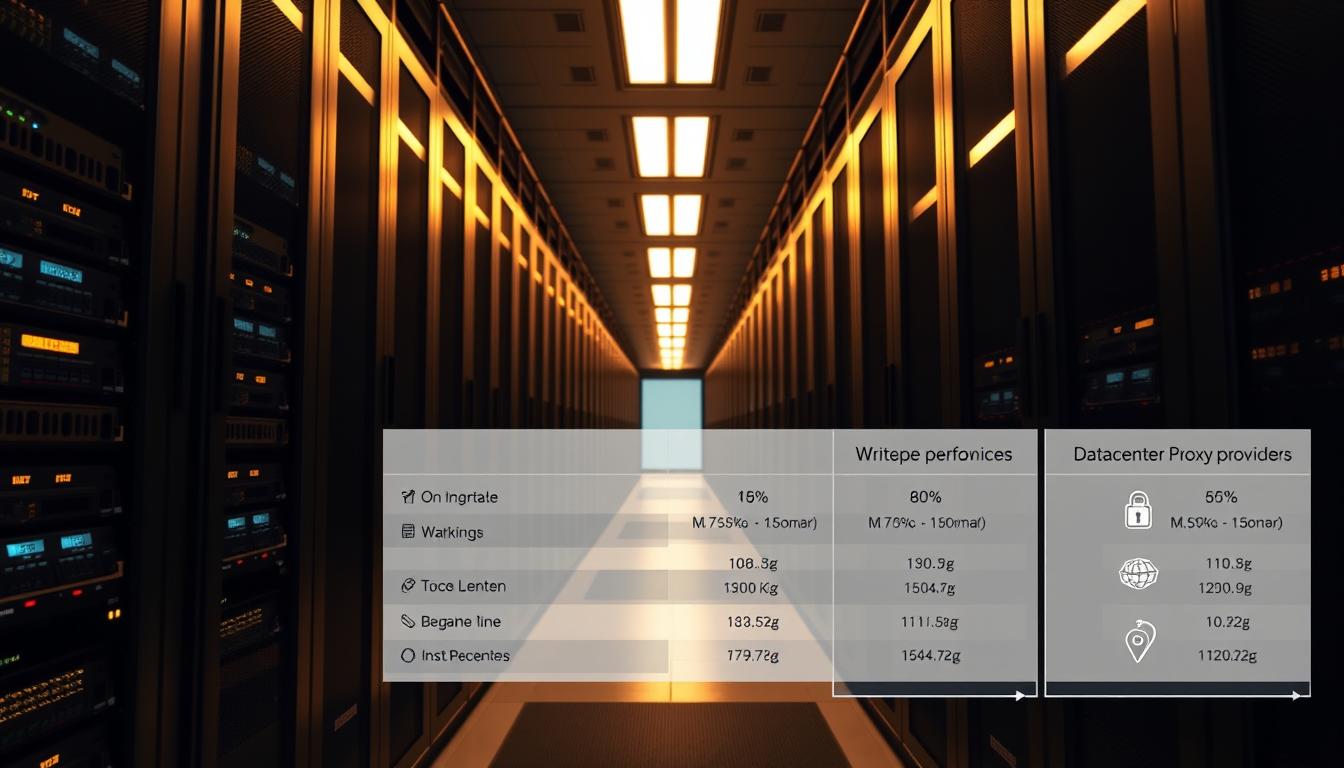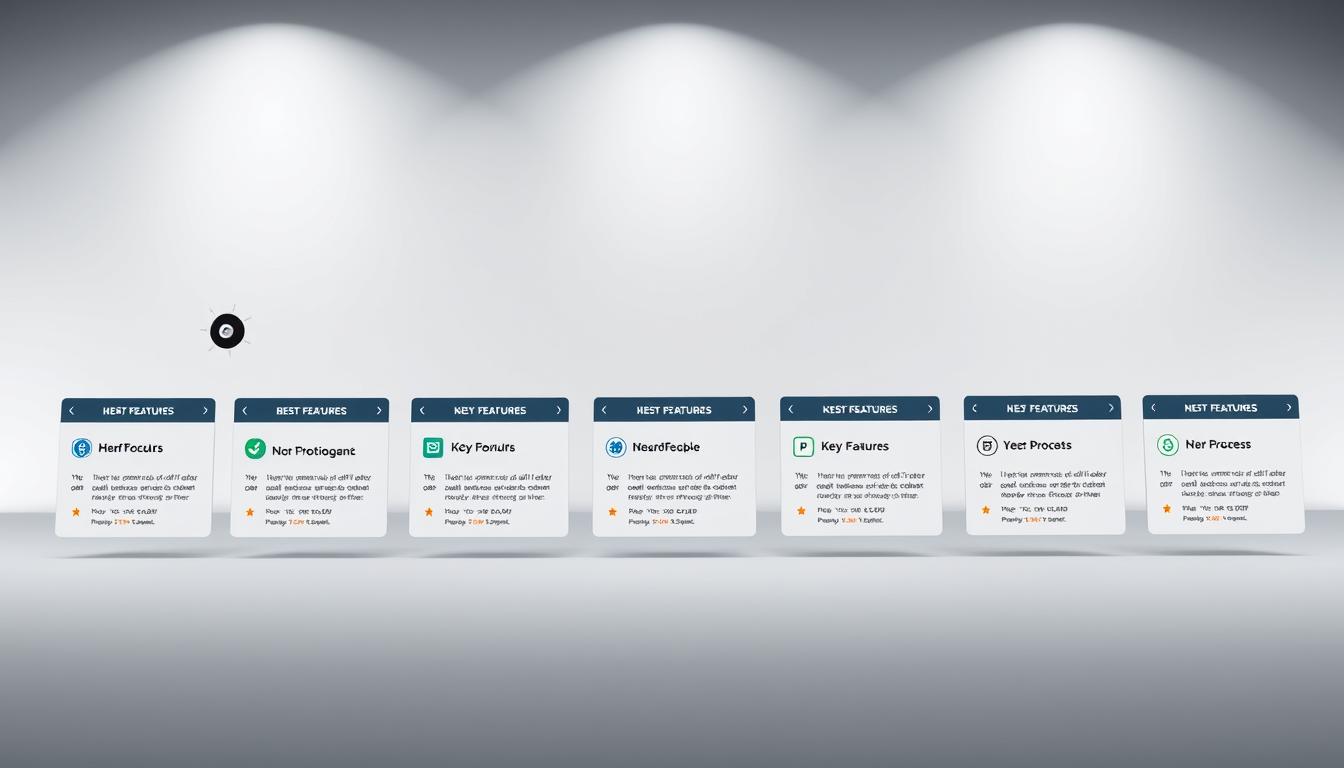FTC disclaimer: This post contains affiliate links and I will be compensated if you make a purchase after clicking on my link.
Are you having trouble making your database run better and stay safe? With so many tools out there, picking the right one can be hard. We get it. As developers and IT pros, we know how crucial it is to choose the right software for your database.
In this guide, we’ve picked the best database monitoring tools after testing over 2,000. We’ve looked at tools for SQL Server, Oracle, MySQL, PostgreSQL, and NoSQL databases. Our goal is to help you find the best software to improve your database’s performance, security, and efficiency.
Key Takeaways
- Discover the essential features and capabilities to look for in a robust database monitoring tool.
- Understand the benefits of effective database monitoring, from proactive performance optimization to enhanced security.
- Explore the latest trends and innovations shaping the future of database monitoring software.
- Compare the top database monitoring solutions, including Datadog, SolarWinds, and New Relic, to find the best fit for your needs.
- Learn how to evaluate database monitoring tools based on core functionality, usability, customer support, and value for money.
What is Database Monitoring?
Database monitoring is key for businesses to watch their network and database closely. It includes tasks done often to keep the database running well. If they ignore database health, they could lose a lot of money. Big companies might lose $9,000 every minute if they’re down.
Definition and Importance of Database Monitoring
Database monitoring is vital to avoid losing money, keep data safe, and make users happy. It helps analyze data better, cuts IT costs, and makes work easier. With DevOps changing fast and hybrid databases on the rise, monitoring is more important than ever. It helps companies handle their growing IT needs smoothly.
Benefits of Effective Database Monitoring
Having a strong database monitoring plan brings many advantages. Here are some:
- It makes sure data systems can grow, change, and follow rules.
- It stops money loss by finding and fixing problems early.
- It keeps data safe and follows laws.
- It makes users happier by making database performance better.
- It helps make better choices by analyzing data well.
- It saves money on IT by using resources wisely.
- It automates boring tasks and keeps improving things.

“In a world where DevOps is rapidly evolving, and hybrid databases are becoming the norm, effective database monitoring is essential, as it enables organizations to navigate the complexity of their expanding IT landscapes with ease, increasing operational efficiency.”
Key Considerations for Selecting Database Monitoring Software
When picking Selecting Database Monitoring Software, IT teams need to look at several important factors. They must find the right tool for their Database Monitoring Requirements. The market has many tools, from single system components to full platforms. It’s key to focus on a few main points to make a good choice:
- Find out what needs to be watched, like query speed, response times, error rates, and how much resources are used.
- Decide what data is most important to collect and use to understand how data is accessed and used.
- Figure out what you want to achieve with monitoring, like cutting crashes, solving bottlenecks, or reducing data corruption risks.
- Check if the monitoring tool fits your budget and support needs.
- See if you need to monitor on-premises systems, cloud environments, or both, and pick a tool that can handle it.
By thinking about these points, IT teams can pick a database monitoring software. This software will give them the visibility and insights they need. It will help improve database performance, cut costs, and boost business results.

“Effective database monitoring can lead to time savings, improved retention rates, reduced stress levels, and enhanced operational performance.”
Criteria for Evaluating Database Monitoring Tools
When looking for the best database monitoring software, consider several key points. These include Database Monitoring Functionality, Usability, and Customer Support. Each aspect is important for making the right choice.
Core Database Monitoring Functionality
Effective database monitoring tools have key features. They should offer real-time Database Performance Monitoring and track history. They also need query optimization and monitoring for high availability and disaster recovery.
It’s also important to have strong Database Security Monitoring to find and fix threats.
Additional Standout Features
Top database monitoring tools have advanced features. These include Predictive Analytics and AI-driven Insights for spotting issues early. They also have Customizable Dashboards and Guided Workflows for easy data analysis.
Usability
The tool’s user experience is key. It affects how well you manage your database. Look for tools with easy-to-use interfaces and clear health statuses.
They should also have customizable dashboards that are simple to set up.
Onboarding
Easy onboarding is important. It helps you get the most from your investment. Choose tools with good Training Materials and a simple setup process.
Also, look for tools with a strong Community Support network to help new users.
Customer Support
Good Database Monitoring Tool Customer Support is crucial. It helps solve problems and keeps your database running smoothly. Look for 24/7 support through various channels.
Also, consider tools with Dedicated Account Managers for bigger clients.
Value for Money
It’s important to check the Database Monitoring Tool Pricing and value. Look for flexible pricing and a good feature set for the cost. Also, try out Free Trials to see if the tool works well for you.
Customer Reviews
Reading Database Monitoring Tool Customer Reviews can give you insights. Look for tools with positive feedback on performance, usability, and support. Choose tools that are known for improving database health and reliability.
By carefully evaluating these criteria, you can find a database monitoring tool that meets your needs. This ensures your database runs well, is secure, and reliable.

Trends Shaping the Future of Database Monitoring Software
The world of database monitoring tools is changing fast. This is because data environments are getting more complex. There’s a big need for tools that can manage databases in real-time.
Cloud and hybrid monitoring are big trends. They help keep an eye on data no matter where it is. AI and machine learning are also key. They help predict problems before they happen.
Automation is making database monitoring easier. It automates tasks like optimizing indexes and tuning queries. This lets IT teams work on bigger projects.
Scalability and flexibility are also important. As databases grow, tools need to keep up. They must handle more data and workloads without slowing down.
Staying up-to-date with these trends is crucial. It helps businesses use the best tools for their data. This leads to better efficiency, data management, and decision-making.

| Trend | Impact |
|---|---|
| Cloud and Hybrid Monitoring | Seamless integration between database monitoring tools and cloud platforms, enabling organizations to maintain visibility and control over their data infrastructure regardless of location. |
| AI and Machine Learning | Predictive analytics powered by AI and ML algorithms will allow for early identification and resolution of potential performance issues, minimizing downtime and enhancing system reliability. |
| Automation in Performance Tuning | Automated tasks such as index optimization, query tuning, and resource allocation will streamline the database monitoring process, freeing up IT teams to focus on more strategic initiatives. |
| Scalability and Flexibility | Robust monitoring solutions that can adapt to changing data volumes and workloads will be essential for maintaining optimal database performance and availability. |
Top Database Monitoring Software Solutions
Keeping your databases healthy and performing well is key. The right monitoring tools are essential. Here are some top solutions that offer the insights and capabilities you need:
Middleware Database Monitoring
Middleware’s Database Monitoring Software gives you detailed insights into your databases. It supports optimization and solving issues. It has Middleware Database Monitoring, Query Monitoring, and Root Cause Analysis.
It also offers Real-Time Monitoring and Historical Data Analysis for tracking query performance.
Datadog
Datadog is a unified monitoring and analytics platform. It gives you a clear view of database performance across various technologies. It has Real-Time Database Monitoring and Historical Data Analysis for spotting trends.
Datadog also has Root Cause Analysis tools for fast issue solving. Its Cloud-Based Database Monitoring is cost-effective for organizations.
Site24x7
Site24x7 is a Cloud-Based Database Monitoring platform. It offers visibility into database performance and availability. It supports many database technologies.
It has Real-Time Monitoring of performance metrics, Historical Data Analysis for trends, and Root Cause Analysis tools. Site24x7’s Affordable Database Monitoring plans suit businesses of all sizes.
| Database Monitoring Tool | Key Features | Pricing |
|---|---|---|
| Middleware Database Monitoring |
| Varies based on database size and complexity |
| Datadog |
| Starts at $15 per month per host |
| Site24x7 |
| Starts at $9 per month per monitor |
Best Database Monitoring Software
MySQL Enterprise Monitor by Oracle
MySQL Enterprise Monitor by Oracle is made for watching over MySQL databases. It shows real-time info on how well your database is doing. It also checks if it’s available and safe.
It helps find and fix problems early. It looks at past data to spot trends. It has tools to find the root of problems and sends alerts when needed.
Oracle Enterprise Manager
Oracle Enterprise Manager is a top tool for managing databases. It works with many databases like Oracle, MySQL, and PostgreSQL. It keeps an eye on your database’s health in real-time.
It also looks at past data and finds the cause of problems fast. You can set up alerts and get detailed reports. This helps keep your database running smoothly.
| Feature | MySQL Enterprise Monitor | Oracle Enterprise Manager |
|---|---|---|
| Supported Database Technologies | MySQL | Oracle, MySQL, PostgreSQL, and more |
| Real-time Monitoring | Yes | Yes |
| Historical Data Analysis | Yes | Yes |
| Root Cause Analysis | Yes | Yes |
| Customizable Alerts | Yes | Yes |
| Comprehensive Reporting | Yes | Yes |
MySQL Enterprise Monitor and Oracle Enterprise Manager are top picks for watching over databases. They give you full control and insight into your database setup. This ensures your database runs well, keeping your business on track and users happy.
Other Notable Database Monitoring Tools
There are many tools besides the top ones for database monitoring. Some notable ones include Quest Foglight for Databases, Grafana, Zabbix, Elastic, and InfluxDB.
Quest Foglight for Databases supports many database types like Oracle and SQL Server. It has features for real-time analysis and automated diagnostics.
Grafana is open-source for making custom dashboards. It works with InfluxDB, Elasticsearch, and Prometheus.
Zabbix is open-source for monitoring databases and IT infrastructure. It has features for custom alerts and historical data analysis.
For cloud environments, Azure Monitor and Amazon CloudWatch are good choices. They offer detailed insights into database performance.
Splunk is great for monitoring database logs. It uses machine learning for anomaly detection and has real-time dashboards.
| Tool | Pricing | Key Features |
|---|---|---|
| Quest Foglight for Databases | Pricing upon request | – Supports a wide range of database technologies – Real-time performance analysis – Automated diagnostics and historical reporting |
| Grafana | Open-source, with paid plans available | – Customizable data visualization dashboards – Integrates with various data sources – Supports time-series data analysis |
| Zabbix | Open-source, with paid support and services | – Comprehensive IT infrastructure monitoring – Custom alerting and historical data analysis – Out-of-the-box templates for popular databases |
| Azure Monitor | Pricing varies based on usage | – Cloud-native monitoring for Azure environments – Comprehensive visibility into database performance – Integrates with other Azure services |
| Amazon CloudWatch | Pricing varies based on usage | – Cloud-native monitoring for AWS environments – Monitors database metrics and logs – Integrates with other AWS services |
| Splunk | Pricing starts at $105/month per user | – Advanced log management and analytics – Monitors database logs for performance issues – Machine learning-powered anomaly detection |
These tools have unique features for different needs. By looking at your specific needs, you can find the best tool for your database.
Prometheus: Open-Source Database Monitoring
Prometheus is a top choice for open-source database monitoring. It was started in 2012 at SoundCloud. Now, it has a big community of developers and users.
In 2016, Prometheus joined the Cloud Native Computing Foundation. This was after Kubernetes. It’s now a key part of the cloud computing world.
Prometheus has many parts, like the main server and exporters. These parts help monitor databases. They are built in Go, making them easy to use.
Prometheus is great for monitoring numbers over time. It works well with microservices. It can handle lots of data at once.
Prometheus is reliable, even when things go wrong. Each server works alone. But, it might not be perfect for very detailed data needs.
People can help make Prometheus better. They can file issues or pull requests. This helps improve Prometheus Database Monitoring, a top Open-Source Database Monitoring tool.
| Feature | Prometheus |
|---|---|
| Data Model | Dimensional, time-series database |
| Querying Language | Prometheus Query Language (PromQL) |
| Alerting | Sophisticated, configurable alerts |
| Kubernetes Integration | Seamless, built-in support |
| Pricing | Open-source, free to use |
Prometheus is a leading Kubernetes Monitoring tool. It offers a strong way to monitor databases. It meets the needs of today’s fast-changing software world.
“Prometheus has become the de facto standard for monitoring modern, cloud-native applications and infrastructure.”
New Relic: Cloud APM and Observability
New Relic is a leader in cloud application performance monitoring (APM). It offers a detailed view of how applications perform. This helps teams find and fix problems early.
Benefits and Considerations
New Relic has customizable dashboards and strong alerting. It makes it easy to watch important metrics and keep systems healthy. It gives deep insights into apps, infrastructure, and user experience.
But, it can be hard for new users to learn all the tools and metrics. The learning curve is steeper than some other APM solutions. Yet, New Relic’s deep insights and customization make it worth it for those looking to improve New Relic Database Monitoring, Cloud APM, and Application Performance Monitoring.
| Team Size | APM Hosts | Infrastructure Hosts | Log Ingest |
|---|---|---|---|
| Large (150 Engineers) | 225 | 350 | 20K GB |
| Midsize (65 Engineers) | 125 | 200 | 10K GB |
| Small (25 Engineers) | 20 | 50 | 2.5K GB |
New Relic has a free tier with no credit card needed. It’s great for teams of all sizes. The platform also has many integrations, security certifications, and customer testimonials from top companies.
“New Relic has been a game-changer for our organization, providing unparalleled visibility into our application performance and enabling us to proactively address issues before they impact our customers.” – Scott Favelle, Chief Technology Officer
AppDynamics: Business Observability Platform
AppDynamics is backed by Cisco. It helps companies see their tech from a business angle. This lets them focus on what’s important. AppDynamics Database Monitoring works well with many services, like SaaS and cloud platforms.
AppDynamics is great at finding and watching problem transactions. This boosts business productivity. It also gives real-time views of the whole app stack. This means you get detailed insights for monitoring performance and availability.
It connects app performance with business results. This helps make quicker decisions. AppDynamics has features like auto-discovery and baseline performance. It also does anomaly detection and infrastructure monitoring.
But, AppDynamics can be pricey, especially for big companies. Some rivals might cost less but offer similar benefits. Still, AppDynamics is a top pick for those wanting a full Transaction Monitoring solution.
Integration with Cloud and Hybrid Environments
More companies are using cloud-based databases and hybrid cloud setups. They need tools that can monitor everything well. These tools must keep up with the changing world, giving clear views and helping to improve performance.
Cloud Database Monitoring and Hybrid Database Monitoring help keep things running smoothly. They work with Monitoring Distributed Databases across different places. This means seeing how everything is doing, no matter where it is.
Modern database monitoring tools should have a few key things:
- They should work well with big cloud services like AWS, Azure, and Google Cloud. This lets you see everything in one place.
- They should support hybrid cloud setups. This means you can watch both your local and cloud databases from one spot.
- They should let you track important stats across different databases. This includes how busy resources are, how fast queries are, and if everything is up and running.
- They should send alerts and take actions on their own. This helps fix problems before they cause trouble.
- They should grow with your data. As your cloud and hybrid setup gets bigger, these tools should be able to handle it.
Choosing the right database monitoring tools is key. They help you see and control your data better. This means your data setup can run smoothly and efficiently, even as it grows.
“The shift towards cloud and hybrid environments has transformed the way we manage and monitor our databases. Seamless integration and comprehensive visibility are now essential for maintaining optimal performance and cost-effectiveness.”
AI and Machine Learning for Predictive Analytics
The world of database monitoring is changing fast. Predictive analytics powered by AI and machine learning are leading this change. These tools help teams find and fix problems early, making databases run better and stay healthy.
AI-driven monitoring can spot problems before they start. It uses machine learning to find patterns and odd behaviors. This way, teams can fix issues before they cause big problems. It helps keep systems running smoothly.
Another big plus is automatic tuning. AI looks at how databases are doing and suggests ways to improve. This saves time and makes databases work better. It’s a big help for teams.
“Pecan’s Predictive GenAI framework is recognized as ‘a game changer’ by industry partners, allowing most data analysts to build their first machine learning model in under a day.”
AI monitoring does more than just improve performance. It also helps predict market trends and personalize customer experiences. This makes businesses more competitive and informed.
| Predictive Analytics Tool | Pricing |
|---|---|
| Marketing Evolution (MEVO) | Pricing tiers include Mevo Link Innovator, Mevo Omni Enterprise, and Mevo Custom Trailblazer. |
| Tableau | Pricing tiers: Tableau Creator ($75/user/month), Tableau Explorer ($42/user/month), and Tableau Viewer ($15/user/month), billed annually. |
| Emcien | Offers a free trial and provides paid plans on demand. |
| Improvado | Provides custom quotes on demand for their marketing data aggregation platform. |
| SAP Predictive Analytics | Pricing delivered on demand, part of SAP Analytics Cloud. |
More and more, businesses see the value in AI-Driven Database Monitoring and Predictive Analytics. Tools like Anomaly Detection and Automatic Tuning help teams work better. This leads to success for businesses.
Automation in Performance Tuning
In the world of database management, finding the best performance is key. Thanks to advanced Database Performance Tuning tools, this task is easier than ever. These tools now have Automated Performance Optimization features. This helps businesses make their database work better than ever before.
These modern tools are great at making smart changes. They use Intelligent Configuration Adjustments to improve your database’s performance. They analyze your database and make changes to keep it running smoothly, all on their own.
- Automated identification and resolution of performance bottlenecks
- Proactive optimization of query execution through index recommendations
- Dynamic scaling of resources based on usage patterns and workload fluctuations
- Seamless integration with cloud and on-premises database environments
- Predictive analytics to anticipate and prevent potential performance issues
Using these tools, businesses can manage their databases better. They save time and resources for important tasks. The benefits of Database Performance Tuning automation are huge. It helps keep databases running well, cuts costs, and makes businesses more competitive.
| Feature | Description |
|---|---|
| Automated Query Optimization | Automatically identifies and resolves performance bottlenecks by optimizing query execution plans. |
| Dynamic Resource Scaling | Scales resources up or down based on usage patterns and workload fluctuations to ensure optimal performance. |
| Predictive Analytics | Utilizes machine learning algorithms to anticipate and prevent potential performance issues before they arise. |
| Cloud and Hybrid Support | Seamlessly integrates with cloud-based and on-premises database environments, providing a unified view of performance. |
As the need for efficient database management grows, automation’s role will become even more important. By using these advanced tools, businesses can achieve more, save money, and stay ahead in the digital world.
Scalability and Flexibility
As your database grows, it’s key to scale your monitoring tools. This keeps performance high and latency low. It’s also vital to monitor different database types. This means using tools that can grow with your database needs.
The dbWatch Control Center stands out in this area. It offers scalable and flexible monitoring for many databases. This includes SQL Server, Oracle, and more.
The dbWatch Control Center grows with your database needs. It works for small and large databases, in the cloud or on physical servers. It’s great for big companies and service providers.
| Feature | Benefit |
|---|---|
| Scalable database monitoring | Accommodate growing database environments without compromising performance |
| Flexible monitoring of diverse database architectures | Adapt to the evolving database landscape and support a wide range of database types |
| Automated monitoring and management tasks | Improve DBA productivity and optimize resource usage |
| Centralized monitoring, management, and reporting | Consolidate critical functions to save time and costs |
Using the dbWatch Control Center boosts your monitoring. It helps manage risks and control database resources. This leads to more efficient DBAs and cost savings for your company.
“The dbWatch Control Center is a game-changer for our database management. Its ability to scale and monitor diverse architectures has been a huge asset in keeping our growing database environment running smoothly.”
– IT Manager, Fortune 500 Company
Conclusion
Database management is changing fast. Good database monitoring software is key. It helps improve performance, security, and operations. This leads to better business results.
When choosing a database monitoring tool, consider its core features, standout points, ease of use, and cost. Also, watch for new trends like AI, cloud integration, and automation. These changes mean your tool must keep up with digital demands.
Whether you handle one database or many, the right software is crucial. It works best with help from experienced consulting firms. This way, you keep your data safe, healthy, and growing. Using these tools, you can lead your business to success in the data age.








